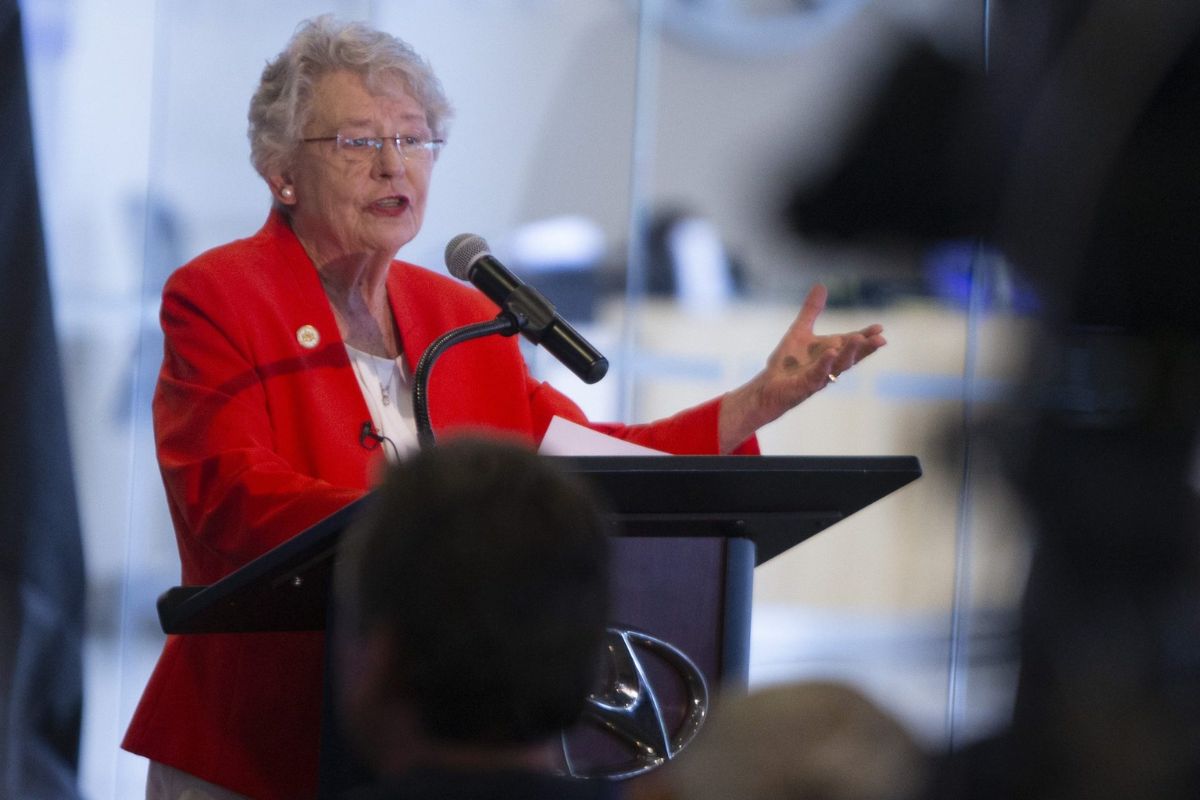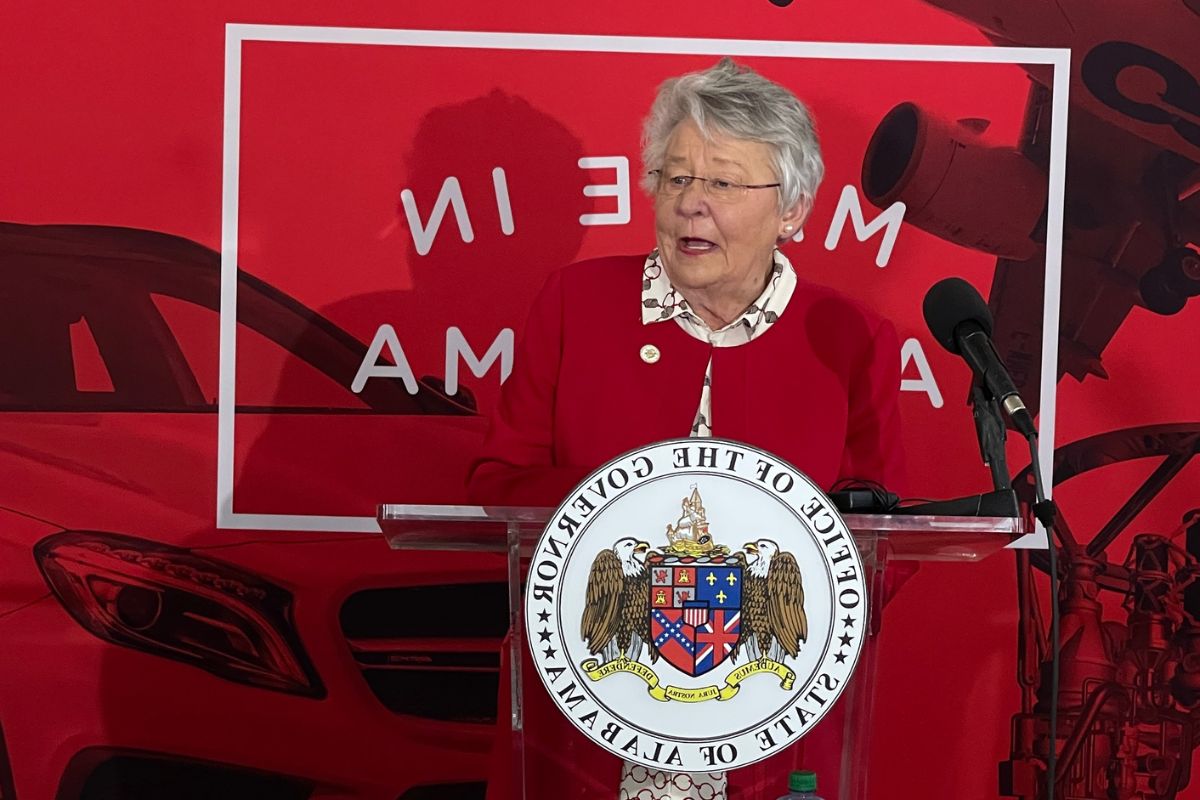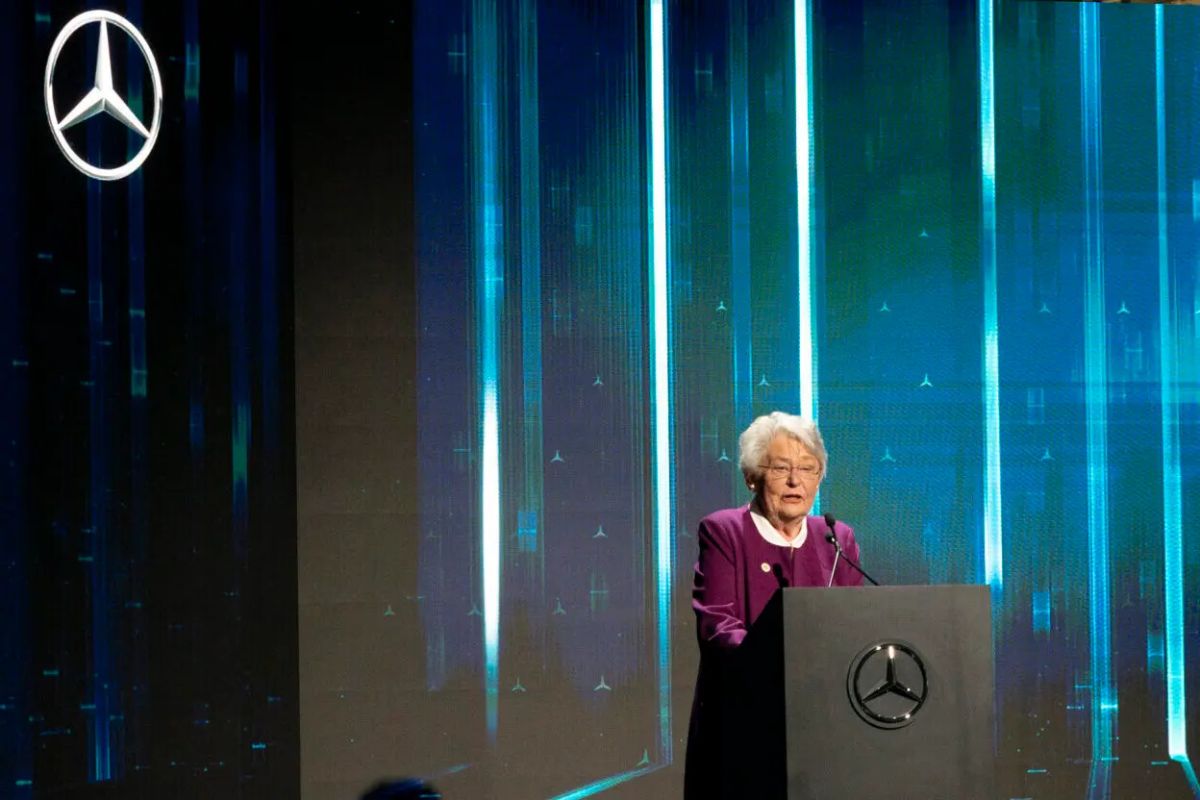Governor Ivey Defends Alabama Economic: In the face of a significant unionization drive at the Mercedes-Benz Vance Plant, Governor Ivey has staunchly defended Alabama’s economic model. As concerns mount over the potential impact on the state’s economic success, Governor Ivey asserts that out-of-state special interests are at play, threatening the state’s right-to-work status.
With a commitment to prioritizing education and workforce development, Governor Ivey aims to safeguard Alabama’s economic model amidst the push for UAW unionization.
Key Takeaways
- The UAW unionization drive at the Mercedes-Benz Vance Plant has gained momentum, with 30% of the workforce signing union authorization cards.
- Governor Ivey is concerned that unionization could lead to increased labor costs, disrupt the current non-unionized workforce’s flexibility, and impact investment and job creation in the state.
- Alabama’s right-to-work laws have created obstacles for union organizing efforts, and past attempts, such as at the Amazon fulfillment center in Bessemer, faced strong opposition.
- Governor Ivey believes that out-of-state special interest groups may prioritize their own agendas over local workers and businesses, potentially disrupting Alabama’s economic model.
Unionization Drive at Mercedes-Benz Vance Plant: UAW’s Significant Push
The United Auto Workers’ unionization drive at the Mercedes-Benz Vance plant represents a substantial effort to secure collective bargaining rights for the workforce. With 30% of the workforce already signing union authorization cards, this push for union representation is gaining momentum.
The UAW’s goal is to negotiate better wages, benefits, and working conditions for the employees at the plant. The move has sparked a robust response from Alabama Governor Kay Ivey, who is defending the state’s economic model amidst the unionization push. The governor’s defense highlights the potential impact of unionization on Alabama’s business environment and its ability to attract and retain companies.
This unionization drive at the Mercedes-Benz Vance plant is significant not only for the workers involved but also for the broader implications it may have on labor relations in the state.

READ MORE: Alabama Economic Crown Jewel: Governor Ivey Stand Against Union Intrusion
Governor Ivey’s Concern: Alabama’s Economic Model Under Attack
Governor Ivey’s concern over the unionization push at the Mercedes-Benz Vance plant reflects her belief that Alabama’s economic model, which has propelled the state’s success in automotive manufacturing, is now under threat.
The governor’s worries stem from the potential disruptions that unionization could cause to the ‘Alabama way’ of doing things, which has been a key factor in attracting and retaining automotive manufacturers in the state.
Her concerns highlight the following:
- The risk of increased labor costs: Unionization often leads to higher wages and benefits, which could make Alabama less competitive compared to other states with lower labor costs.
- Potential loss of flexibility: The current non-unionized workforce allows for greater flexibility in terms of production processes and employee management, which may be compromised if a union is introduced.
- Impact on investment and job creation: The success of Alabama’s economic model has attracted significant investment and job creation in the automotive sector. The introduction of a union may deter future investments and hinder job growth in the state.
Right-to-Work State: Past Challenges in Unionization Attempts
Past unionization attempts in Alabama, a right-to-work state, have encountered significant challenges. The state’s legal framework, which allows employees to choose whether or not to join a union, has created obstacles for labor organizing efforts. This has been particularly evident in recent events, such as the Amazon fulfillment center in Bessemer, where a high-profile unionization drive faced strong opposition.
The right-to-work laws in Alabama have often been criticized by labor advocates for weakening the power of unions and making it more difficult for workers to collectively bargain for better wages, benefits, and working conditions. These challenges highlight the ongoing tension between the interests of workers and the business-friendly environment promoted by right-to-work policies in Alabama.

Governor Ivey’s Response: Out-of-State Special Interests and Economic Success
Alabama’s governor, Kay Ivey, has responded to the UAW unionization push by highlighting the influence of out-of-state special interest groups and their potential impact on the state’s economic success. Governor Ivey believes that these special interest groups do not have the best interests of Alabama or its automotive industry workers at heart. She sees the unionization push as a potential turning point that could shape the future of business practices in the state.
To convey a deeper meaning, it is important to consider the following:
- Out-of-state special interest groups may prioritize their own agendas over the well-being of local workers and businesses.
- The influence of these groups could potentially disrupt Alabama’s economic model, which has been successful in attracting non-union automakers.
- Governor Ivey’s defense of Alabama’s economic model reflects her commitment to maintaining the state’s business-friendly environment and preserving its economic success.
Commitment to Alabama’s Economic Model: Prioritizing Education and Workforce Development
With a strong emphasis on education and workforce development, Governor Ivey showcases her commitment to preserving Alabama’s economic model amid the UAW unionization push. Recognizing the importance of a skilled workforce in attracting and retaining businesses, Governor Ivey has made education and workforce development top priorities for the state. This commitment is evidenced by the state’s track record of success in global automotive manufacturing since Mercedes-Benz’s establishment in 1993.
To further emphasize her dedication, Governor Ivey has implemented various initiatives aimed at enhancing education and workforce development. One such initiative is the AlabamaWorks program, which connects job seekers with employers and provides training and skill development opportunities. Additionally, the governor has increased funding for career and technical education programs, ensuring that students are equipped with the skills needed for the jobs of tomorrow.
| Initiative | Description | Impact |
|---|---|---|
| AlabamaWorks | Connects job seekers with employers and provides training and skill development opportunities | Increases job placement rates and ensures a skilled workforce |
| Increased funding | Increased funding for career and technical education programs | Equips students with the skills needed for the jobs of tomorrow |
Governor Ivey’s commitment to education and workforce development demonstrates her understanding of the crucial role they play in maintaining Alabama’s economic model. By prioritizing these areas, she ensures that the state remains competitive in attracting businesses and creating opportunities for its workforce.
Conclusion Of Governor Ivey Defends Alabama Economic
Governor Ivey has defended Alabama’s economic model in response to the UAW unionization push at the Mercedes-Benz Vance Plant.
Despite past challenges in unionization attempts, Alabama’s right-to-work state status remains intact.
Governor Ivey attributes the push for unionization to out-of-state special interests and emphasizes the state’s commitment to education and workforce development.
This defense highlights the importance of maintaining Alabama’s economic success and the governor’s dedication to preserving the state’s economic model.
Our Reader’s Queries
Who is included in United Auto Workers?
What is the purpose of the UAW?
The United Auto Workers (UAW), officially known as the International Union, United Automobile, Aerospace, and Agricultural Implement Workers of America, is a labor union in the United States (including Puerto Rico) and southern Ontario, Canada, representing a diverse range of workers.
What is the structure of the UAW?
The UAW is segmented into nine geographic regions, each overseen by a Regional Director elected at the UAW Constitutional Convention by delegates from the respective represented region.

